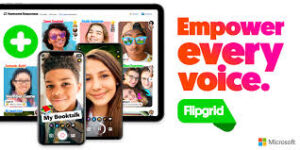Three seems like a magic number: not too many and not too few either.
For example, when I teach, I usually organize my lesson around three major points: the what, why and how of a topic. I would begin by telling my students the three points, then discuss with them what these three points entail, and end my lesson by reminding them of these three points.
This structure works most of the time: it helps me and my students stay focused throughout the lesson.
One of the big pluses of organizing a lesson around three major points (which is easy for me to remembers and which does not overwhelm my working memory) is that I can focus more on delivering my lesson in the most efficient manner.
I can pepper my lesson with thought provoking discussion questions at strategic points, engage students in deep reflections, help them make meaningful connections and assess and monitor their learning.
The omne trium perfectum (the rule of three) is applicable to hybrid learning contexts, which most of us find ourselves in these days. One key question that teachers often ask is: How many tech tools should they use in a single lesson?
The answer to this question can be different depending on who the question is addressed to. Some say the more the merrier; others, like me, would suggest the fewer the better. More is less; less is more when it comes to using tech tools in the classroom.
I would say not more than three. By keeping it to three, you could free up your attentional resources for the more important task, i.e., delivering your lesson in the most efficient manner. This often involves keeping your students engaged affectively, cognitively and socially throughout the lesson so that they get the most out of your lesson.
Using numerous tech tools in a single lesson would only overburden your working memory and disrupt the flow of your lesson. Needless to say, your students would also find your lesson disorganized and confusing.
What three tech tools do you need? You probably need the following:
- A tech tool that can engage your students affectively, cognitively and socially during your lesson. Examples include Answer Garden, Jamboard, Mentimeter and Kahoot.

- A tool that supports participatory learning, i.e., one that involves students in the co-construction of knowledge. Examples include EdPuzzle. Wooclap, Insert Learning and Pear Deck.

- A tool that supports multimodal learning in which students can express their thoughts and demonstrate their understanding using multimodal representations, e.g. audio, video, drawings etc. Examples include Flipgrid, Kami, Zoom’s Annotate tool, etc.
Remember all great things come in threes. Not 10, not 20 and definitely NOT 30!!


